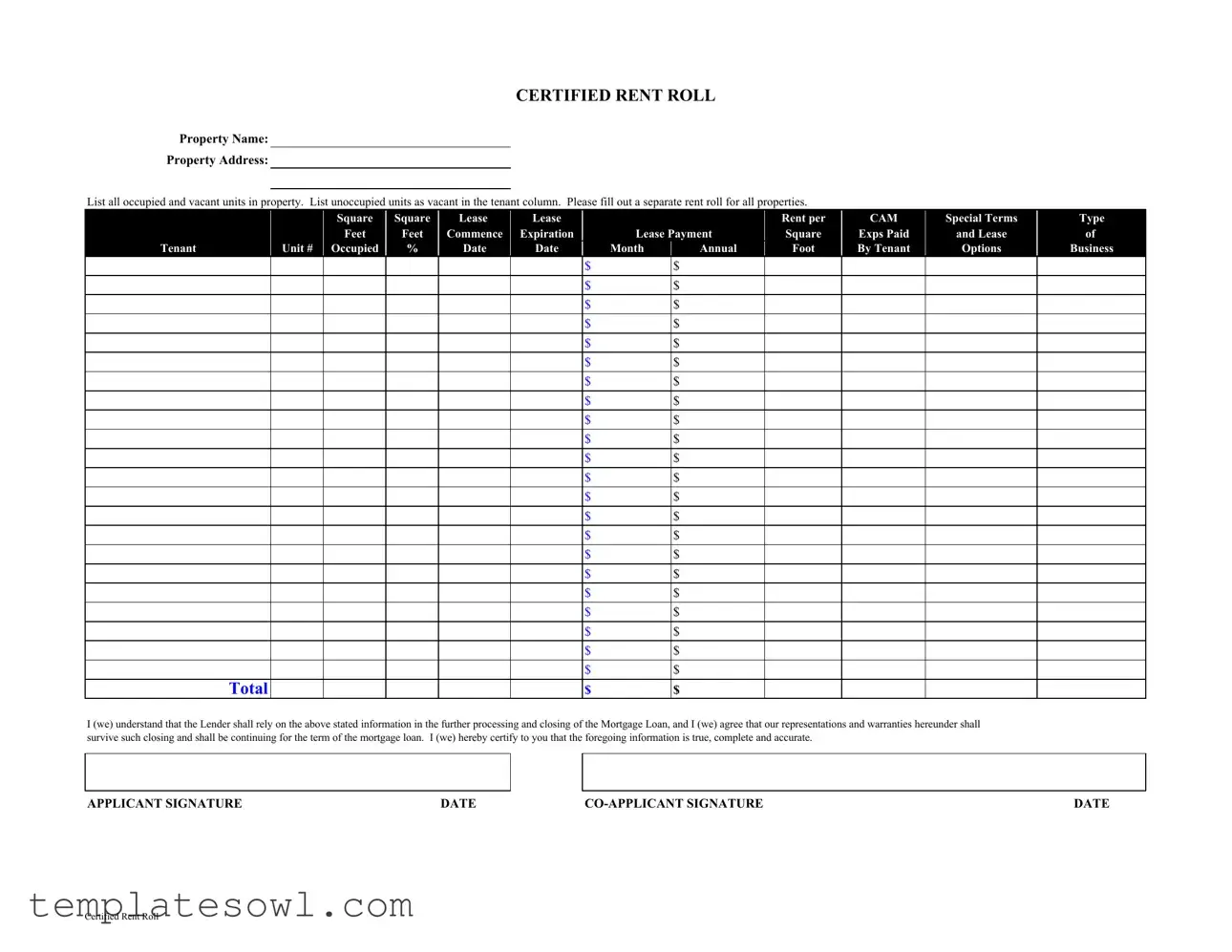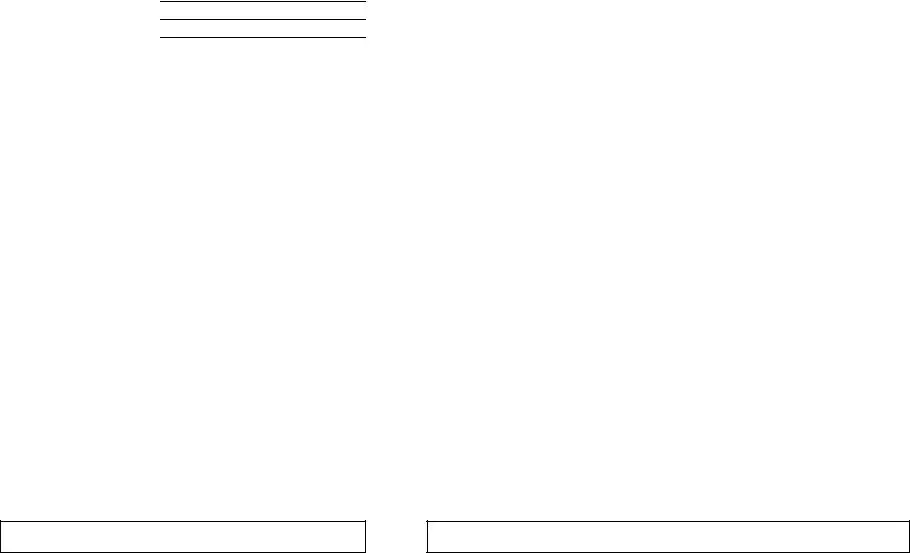What is a Rent Roll form?
A Rent Roll form is a comprehensive document listing all the units within a property, detailing which units are occupied and which are vacant. It includes information such as lease terms, rent amounts, and tenant details.
Why is a Rent Roll form important?
The Rent Roll form is crucial for both property management and financial institutions when assessing the rental income of a property. Lenders use this information to evaluate investment opportunities and manage risks associated with loans.
What information must be included on the Rent Roll form?
The form requires the property name, address, and a list of all units with their occupancy status. Additional details on square footage, lease dates, rent amounts, and any special terms should also be provided. This helps create a clear picture of the property's rental landscape.
How should I fill out the Rent Roll form for vacant units?
For vacant units, you should list them as "vacant" in the tenant column. Even if there are no current tenants, it's essential to document these units to provide a complete overview of the property.
Do I need to fill out a separate Rent Roll for each property?
Yes, a separate Rent Roll form must be completed for each property. This ensures that the information is accurate and specific to that particular property.
What happens to the information provided in the Rent Roll form?
Lenders rely on the information provided in the Rent Roll for processing and closing mortgage loans. The details you certify will inform their decisions and may affect future financing options.
Who needs to sign the Rent Roll form?
The Rent Roll must be signed by the applicant and co-applicant. This signature certifies that the information included in the form is true, complete, and accurate. It serves as a legal acknowledgment of the information presented.
What are the potential consequences of providing inaccurate information?
Providing inaccurate information can lead to complications in the loan approval process. Misrepresentation may result in denial of financing or legal implications down the line if the inaccuracies are discovered.
How often should I update the Rent Roll form?
It’s advisable to update the Rent Roll form regularly, particularly after tenant changes or lease renewals. Keeping the information current helps maintain accurate records for both management and lender purposes.
Can I use a digital version of the Rent Roll form?
Yes, digital versions of the Rent Roll form are acceptable as long as they capture all the required information. Ensure the format is easily accessible and can be printed if needed for submission to lenders.

